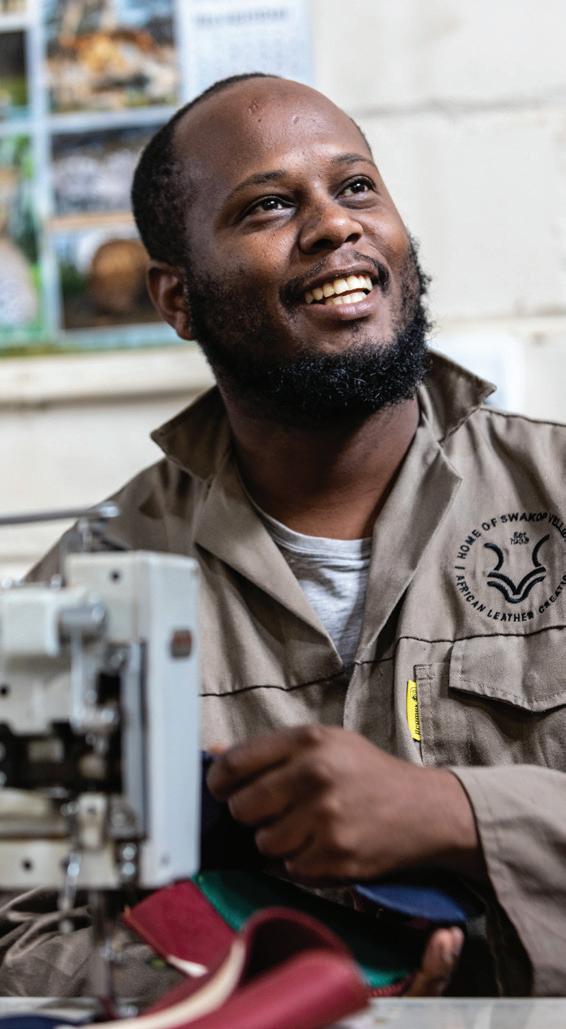
4 minute read
Swakop's iconic footwear
Swakopmund has become synonymous with something you would not necessarily associate with the picturesque coastal town better known for its colonial-era German architecture, including the prominent lighthouse, or outof-place guinea fowl roaming the streets in residential neighbourhoods. Over the years, a small leather shoe manufacturer has been steadily producing a type of footwear that is much loved by locals for function and style. Tourists also get hooked on these shoes and take them back to the far corners of the world.

Velskoene made by African Leather Creations have become a Namibian icon, easily spotted by the small label embroidered with the words Kudu Leder (German for kudu leather) sewn on the throat line of the shoe. As an easy way to identify what brand of velskoen you are looking for, people simply started calling them Swakop Vellies – a name that the new owners of the company have embraced almost like a badge of honour. The company is also the oldest manufacturer of these shoes.

Erwin Leuschner and Lee Coetzee, two Swakopmund locals, bought Africa Leather Creations from previous owner Herbert Schier and took over operations in September last year. As Erwin explains, it wasn't a rash decision to buy this business which had been passed down through two generations of the Schier family. It has sentimental value, like a treasured family heirloom invariably has. Something they, as the new owners, have to look after and continue with.

Erwin Leuschner and Lee Coetzee.
Herbert Schier’s father Ewald started the company as a seal skin tanning business in 1938. It was only in the 1960s, however, that they branched out into velskoene – thanks to a Baster gentleman called Hermanus Beukes. He was looking for work and making these leather shoes was his trade. Ewald Schier saw the potential and started producing these shoes as we know and love them up to this day. Herbert took over after his father’s death in 1980. In the early 2000s he was forced to close the tannery as a result of Swakop’s changing town regulations which did not allow for this type of business in the city centre. But he continued with the shoes. Now in his 80s, he decided to pass the baton to a younger generation.

As Erwin takes me through the workshop to show me the incredible craftsmanship of the staff, it is fascinating to see that the shoes are still entirely handmade. Cutting, stitching and gluing are second nature to these artisans who can pump out around 70 pairs of vellies per day. Erwin shows me the differently coloured hides that are destined to become shoes and explains why each shoe is adorned with the classic Kudu Leder label. “When Ewald Schier started to experiment with different leathers he discovered that kudu is the strongest. Therefore kudu is used and the label is still stitched to every shoe”, he says.
Erwin and Lee intend to boost the legacy of this iconic brand by sticking to what made this type of shoe sought after over the years. The two of them have come up with some fresh ideas, like the limited edition Namibian flag vellies. They also opened an online store – which is perfect to get a new pair when you don’t have the opportunity to visit Swakop.
African Leather Creations are located opposite the Swakopmund municipality at 22 Rakotoka Street, or visit swakopvellies.com.










